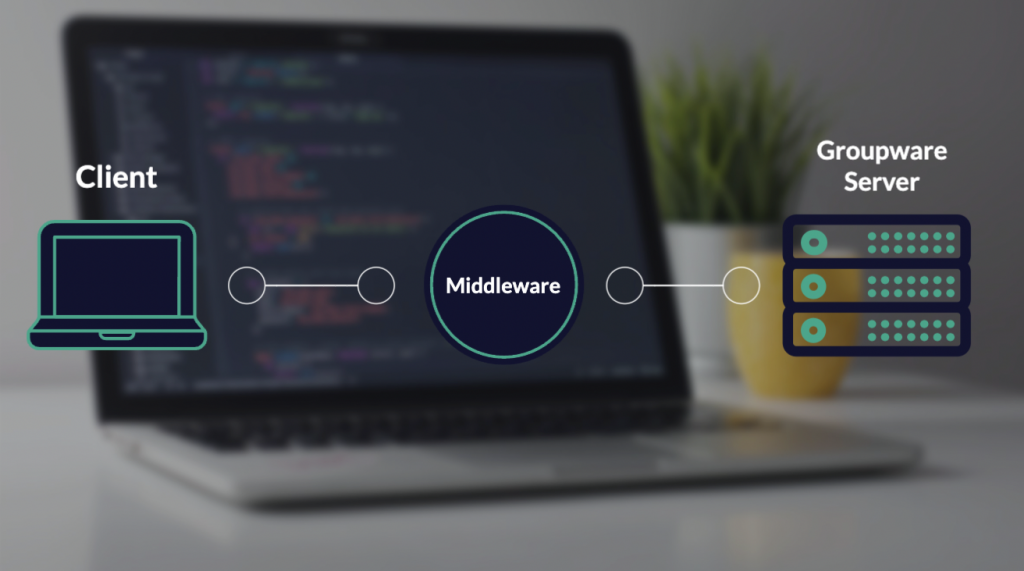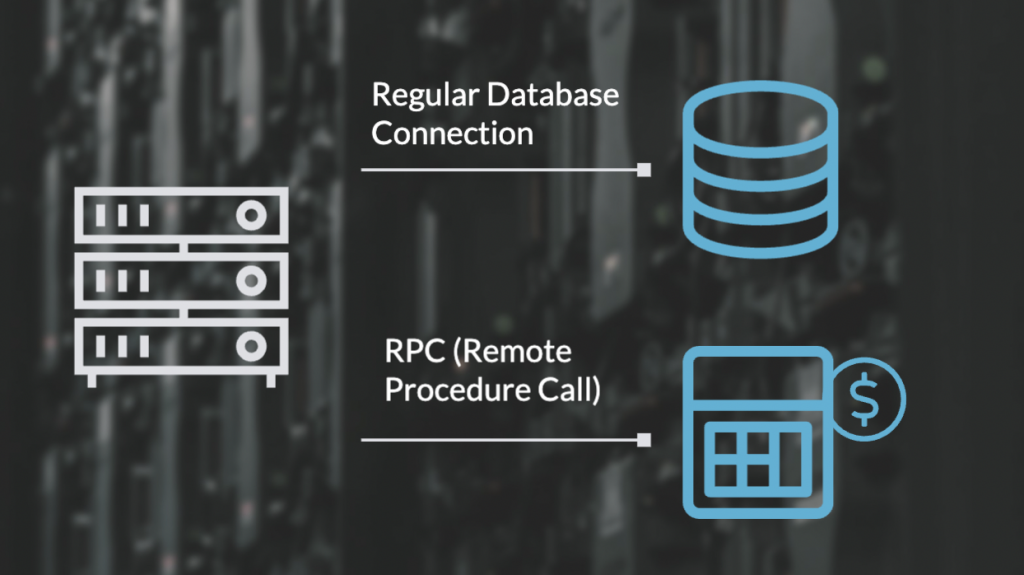Middleware is essentially a software layer that allows different applications and services to interact with one another. In today’s modern landscape, technology infrastructures are becoming increasingly complex and cloud-based, and without middleware to help their different parts communicate, they simply would not function.
Table of content
- What is Middleware? Let’s Break It Down
- What Are the Different Types of Middleware?
- Message Oriented Middleware
- Object Middleware
- Remote Procedure Call (RPC) Middleware
- Database Middleware
- Transaction Middleware
- Portals
- Embedded Middleware
- Content-Centric Middleware
- Application Server Middleware
- Device Middleware
- Web Middleware
- Cloud Middleware
- How Businesses Benefit From Middleware
- Improved Scalability
- Integration of Diverse Systems
- Cost Efficiency
- Legacy Systems Stay In-Tact
- Real-Time Data Processing and Automation
- Ensuring Middleware Implementation Success
Middleware is crucial for businesses seeking to achieve seamless data exchange, enhance scalability and agility, drive operational efficiency, and create a smooth user experience.
It’s no surprise then that the global middleware market size is expected to reach an astounding $60 billion by 2030, growing at a CAGR of 10.2% between 2023-2030, according to a recent report by SkyQuest.
Let’s dive a little deeper into exactly what middleware is, the different types of middleware that exist, and how businesses benefit.
What is Middleware? Let’s Break It Down

Imagine you’re trying to have a conversation with someone who speaks a different language. You want to communicate, but there’s a language barrier. Middleware is like a translator who understands both languages and can help you have a conversation with the other person.
Middleware acts as a bridge between different software applications, services, and even devices that may be written in different computer languages and exist in different formats. The software layer allows them to understand each other’s data and requests, enabling them to work together smoothly.
For example, middleware can connect different types of database systems, web servers and applications, ERP systems, CRM systems, cloud services, mobile applications, IoT devices, BI tools, and more.
Here’s a practical example.
Let’s say you’re using a travel website to book a flight. The website needs to interact with various airlines’ systems to check flight availability and prices, and make reservations. Middleware can translate your request into a format that each airline’s system understands, send the request to the airlines, receive and collect their responses, and translate them back into a single format which you can view on the travel website.
This information is displayed in a user-friendly way, so you can easily compare the prices in one place. When you choose a flight, your booking details are then sent back through the middleware to the respective airline’s system to complete the reservation.

What Are the Different Types of Middleware?
As you can imagine, there are various types of middleware depending on the needs of the business and its IT environment. Most businesses will rely on at least one kind of middleware, and larger organizations will likely need several types to meet operational demands and customer expectations.

Message Oriented Middleware
This type of middleware is an infrastructure that supports the receiving and sending of messages over distributed applications. It enables applications to be disbursed over various platforms and simplifies the process of creating software applications spanning many operating systems and network protocols. It holds many advantages over middleware alternatives (e.g. hard-coding logic) and is one of the most widely used types of middleware.
Object Middleware
Object middleware, also called an object request broker, enables applications to send objects and request services via an object-oriented system. In short, it manages the communication between objects.
Remote Procedure Call (RPC) Middleware

An RPC is exactly what it sounds like. It calls procedures on remote systems and is used to perform synchronous or asynchronous interactions between applications or systems. It is usually utilized within a software application.
Database Middleware
This type of middleware allows for direct access to and interaction with databases. There are many database gateways and connectivity options, and the best one for you will depend on how it works with your existing systems and the goals of your technology solution. This is the most general and commonly known type of middleware and includes SQL database software.
Transaction Middleware
This type of middleware includes applications like transaction processing monitors and web application servers and is becoming increasingly popular.
Portals
This refers to enterprise portal servers. They are considered middleware because portals facilitate front-end integration. Portals are used to create interactions between a user’s computer or device and back-end systems and services.
Embedded Middleware

This type of middleware allows for communication and integration services with an interface of software or firmware. It acts as a liaison between embedded applications and the real-time operating system.
Content-Centric Middleware
This type of middleware allows you to abstract specific content without worrying about how it is obtained. This is done through a simple provide/consume abstraction. It is similar to publish/subscribe middleware, which is another type of software that is often used as a part of web-based applications.
Application Server Middleware
This type of middleware provides a framework for deploying and managing enterprise applications. It often includes tools for security, transaction management, and scalability, making it easier to develop and run large-scale business applications.
Device Middleware
This type is used to connect different types of hardware devices, such as IoT devices, sensors, and mobile phones, with applications or other devices.
Web Middleware

This kind of middleware handles web server and web application communications. It manages HTTP requests and responses, session management, as well as load balancing and caching for web applications.
Cloud Middleware
This type acts as an intermediary layer between cloud-based applications and underlying cloud infrastructure. It facilitates the development, deployment, and management of applications in the cloud.
How Businesses Benefit From Middleware
Modern businesses and large enterprises stand to benefit from using middleware in a myriad of ways. Here are the key advantages of adopting middleware for complex IT environments.
Improved Scalability

As a business grows, so do its requirements in terms of technological capabilities and resources. Middleware can help manage this seamlessly by providing a flexible framework that can scale up or down according to the needs of the business.
For example, let’s say an ecommerce business sees a jump in sales on Black Friday. Middleware will help ensure that their IT systems stay operational and that the UX doesn’t suffer despite the surge in traffic.
Integration of Diverse Systems
Middleware enables the integration of different systems and applications, making it easier for developers to quickly try out new technologies and stay ahead of the competitive curve. This integration also facilitates seamless data flow and process integration, supporting smooth operations.
Cost Efficiency

With middleware integrating various systems, businesses don’t need to develop custom interfaces for each new application. This significantly reduces the costs associated with development and maintenance.
Legacy Systems Stay In-Tact
Many organizations are slowly evolving away from legacy systems, but don’t have the resources to replace them immediately with new technologies. Because middleware allows on-premise systems to speak to new, cloud-based applications, businesses can keep their legacy investments alive for as long as they need to.
Real-Time Data Processing and Automation
In today’s world, companies need real-time access to data insights that can be critical for decision-making, especially in industries like finance or retail. Middleware supports real-time data processing, as well as helps to automate business processes that take repetitive manual tasks off team members’ plates.
Ensuring Middleware Implementation Success

Middleware is a necessary addition to any modern business’ IT infrastructure. But to get the most bang for their buck, there are some best practices that tech teams must follow:
1. Prioritize Security From the Start
Your middleware must support robust security protocols and standards and feature strong authentication and authorization mechanisms. It’s also important to implement data encryption and regular security audits to protect sensitive data and prevent unauthorized access.
2. Define Your Scaling Protocol
You need to make sure you have a scaling strategy from day one. This essentially means implementing a set of adjustable parameters that define how much the middleware can be scaled up or down, based on your predicted resource usage. If you’re relying on a cloud partner to manage the middleware, they’ll take care of this.
3. Automate, Automate, Automate

Middleware allows for an impressive amount of automation, eliminating the need for human effort on repetitive tasks, drastically reducing human error, and enabling heightened agility. Tech teams should make use of this through scripting and scheduling tools and by using middleware management platforms.
4. Invest in Team Training
Middleware can be complex, and so it requires a skilled team to be able to implement and manage it. Make sure your team has the proper training and documentation to be able to do this – it might be an investment in the short-run, but no doubt it will pay off in the long term.
5. Monitor Performance Continuously
Once implemented, you’ll need to continuously monitor and test the middleware to make sure it’s meeting your needs and working as expected. Regular monitoring also helps identify bottlenecks or performance issues early on, allowing you to intervene and prevent bigger problems down the road.
Middleware is widely seen as the glue that holds our IT infrastructures together – and for good reason. But while its benefits are many, it’s no magic bullet. Only by properly assessing the business requirements and implementing best practices will companies be able to ensure middleware project success.
This page is an archive. To learn more about archive pages click here
The responses below are not provided, commissioned, reviewed, approved, or otherwise endorsed by any financial entity or advertiser. It is not the advertiser’s responsibility to ensure all posts and/or questions are answered.





